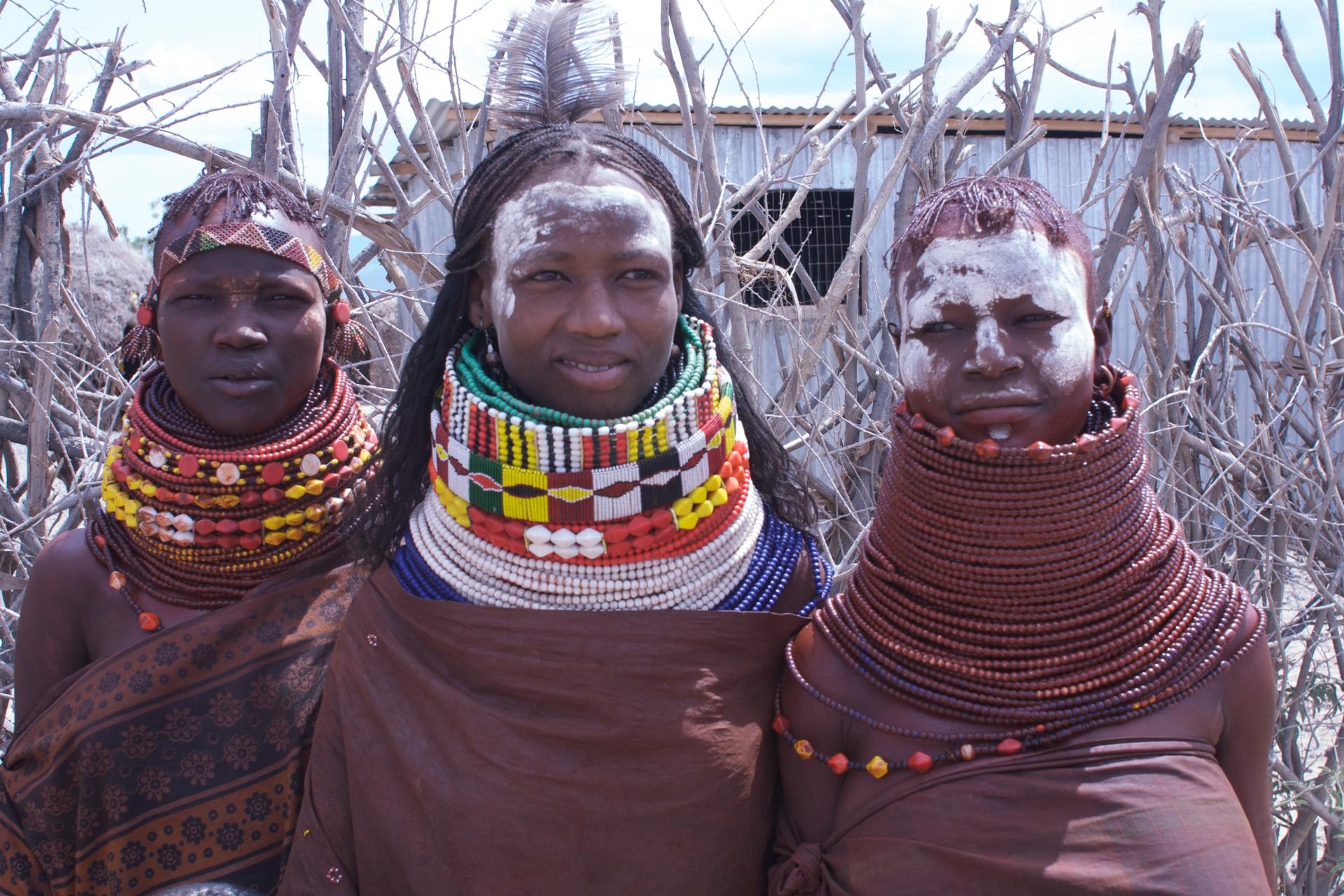Why some Kenyan villagers take AK-47s to fetch water
The Turkana are a nomadic tribe, and their only possessions are their livestock. The village of Loblono is little more than a few temporary stick huts scattered across the sand. It looks like a strong wind could blow everything away. The only solid structure is a borehole and a gleaming solar water pump installed by the NGO Oxfam. It’s why people have settled here.
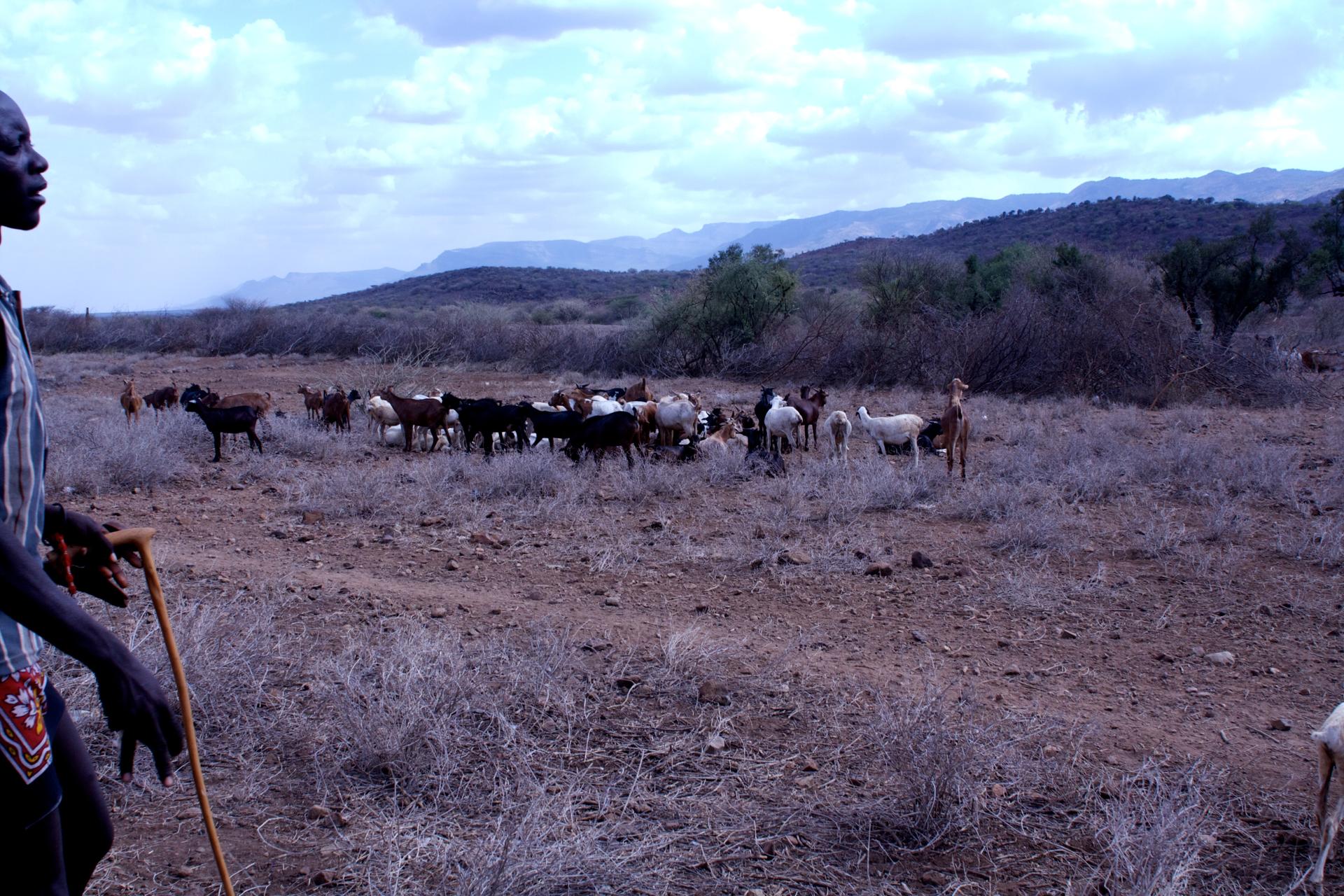
Hundreds of animals crowd around a trough, jostling to drink. There’s not enough water and they cry and bleat in desperation. This corner of Kenya has been defined by drought — and conflict.
“Here. This is the battlefield.”
James Ereng is the area chief, a government-appointed position. He’s dressed head to toe in khaki green like a soldier. The Turkana have been fighting for years with neighboring tribes, and the civil war in South Sudan has made the situation much worse. “They are fighting in South Sudan,” he says. “The government and the rebels get guns, and they spread to the tribes. Those guys are coming to fight us, to take animals by force.”
Along the road, teenage boys herd goats with AK-47s slung over their shoulders.
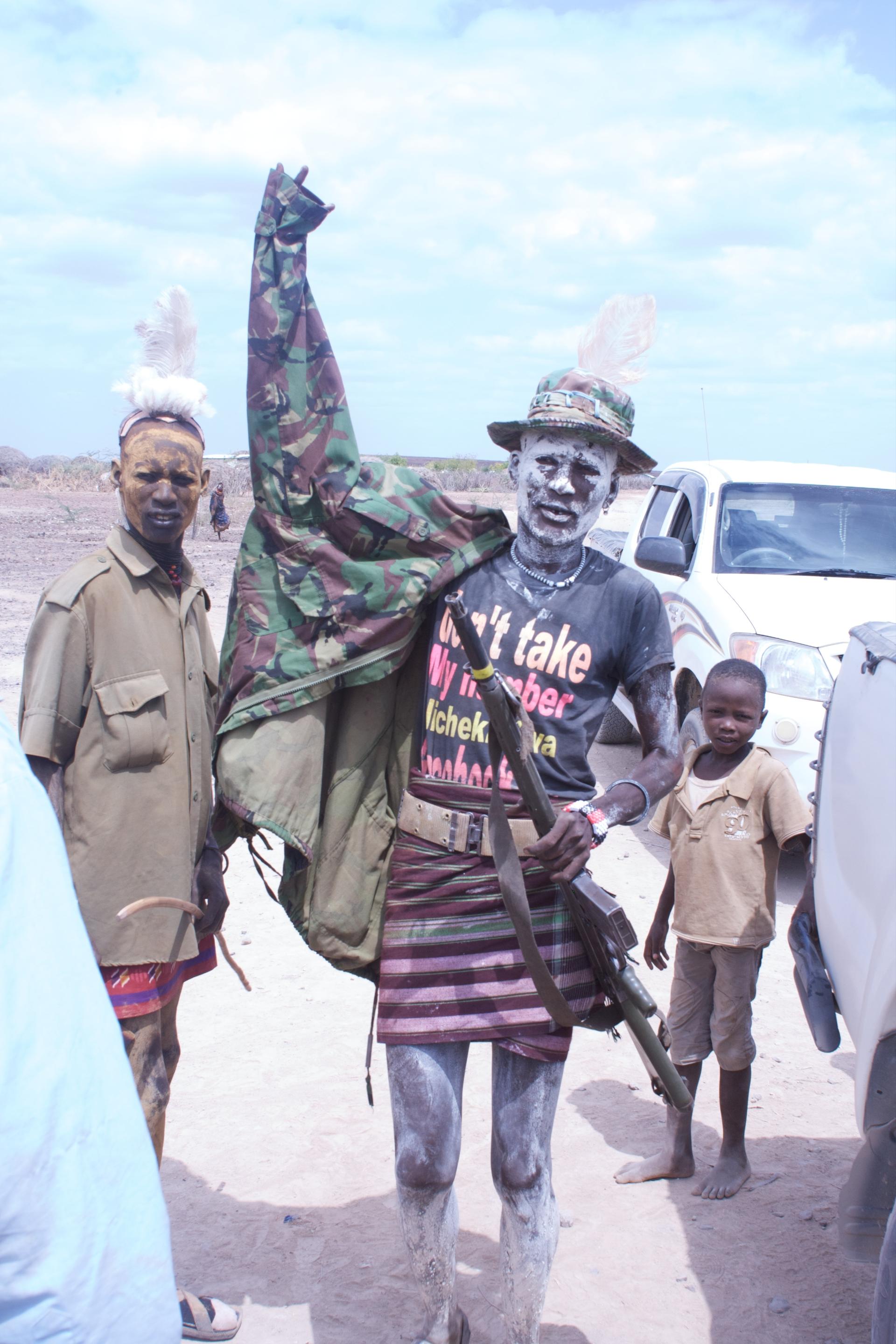
When the dry season comes, the Turkana move to the last remaining grazing areas along the border. But that’s disputed land, and rival tribes will kill to protect their precious fields of grass. According to Chief Oreng, they accuse the Turkana of coming to take their grass and water.
Livestock rules everything around here. A Turkana man is judged on the size of his herd. To get married, he must have hundreds of camels, goats and cattle as dowry. The pastoralist lifestyle has allowed the Turkana to adapt to the desert. But climate change is making it increasingly difficult to survive here. In 2006, a terrible drought and famine starved many and killed thousands of cattle. The reality is . . . they can’t seem to rely on consistent rainy seasons here anymore. Chief Ereng says the rains were weak again this spring.
“We are expecting a disaster,” he says. “A disaster of drought.”
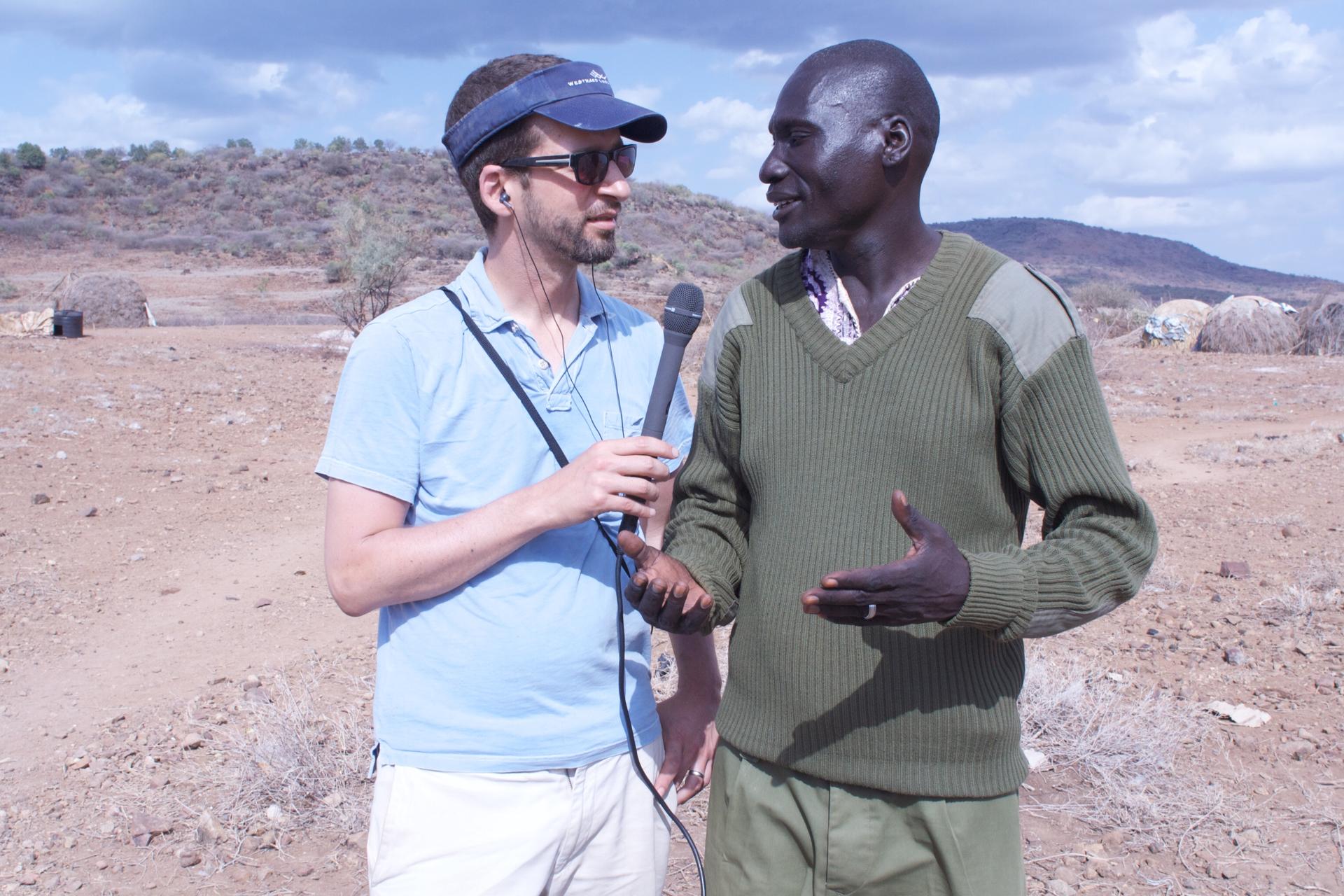
And then tribes here do what they’ve done for hundreds of years — organize raids to replenish their stock.
There is hope that this conflict could end. Recently two discoveries were made that could completely transform life here: a substantial reserve of oil and a massive underground aquifer, the largest in Kenya. The oil could obviously bring much-needed jobs and roads to the region. The water can be used to irrigate fields and ease the devastating cycle of drought and conflict. Benson Longor works for Oxfam in Turkana. “[The aquifer] is huge, but the expectations of the people need to be managed,” says Longor. “As it is now, it is just an unavailable resource that is not yet accessible to the people, including the local community. The need to actually pump resources into making that water accessible is a priority for the Turkana County government.
The effort could take years. It’s not easy to build pipes to carry water across miles of desert, especially in an area that doesn’t even have paved roads. Another solution to the conflict is a peace settlement. Talk to anyone here in Loblono, and they’ll point to a model – to the south of them, the Turkana have made peace with the Karamoja tribe. And it’s lasted. Chief Ereng says people here are tired of risking their lives just to feed their animals. He met with leaders of rival tribes two weeks ago to negotiate a cease fire.
“And we told each tribe, please, let us preach peace,” he says. “Instead our people can live together. Then maybe the problem will be reduced.”
But three days prior a school boy, who had been herding goats, limped into the village with a bullet wound in his leg. If he hadn’t had a gun to defend himself he likely would have been killed. Chief Ereng told people here not to retaliate. Instead, he went back to the leaders and got a promise from them that they’d investigate and punish the perpetrators.
Of course there’s a more radical way to bring about peace: get rid of the animals who need this water and you get rid of the fighting.
Celesti Norongo, speaking through a translator, is not afraid to let go of this traditional pastoralist lifestyle.
“It’s only because of the animals that we are fighting,” she says.
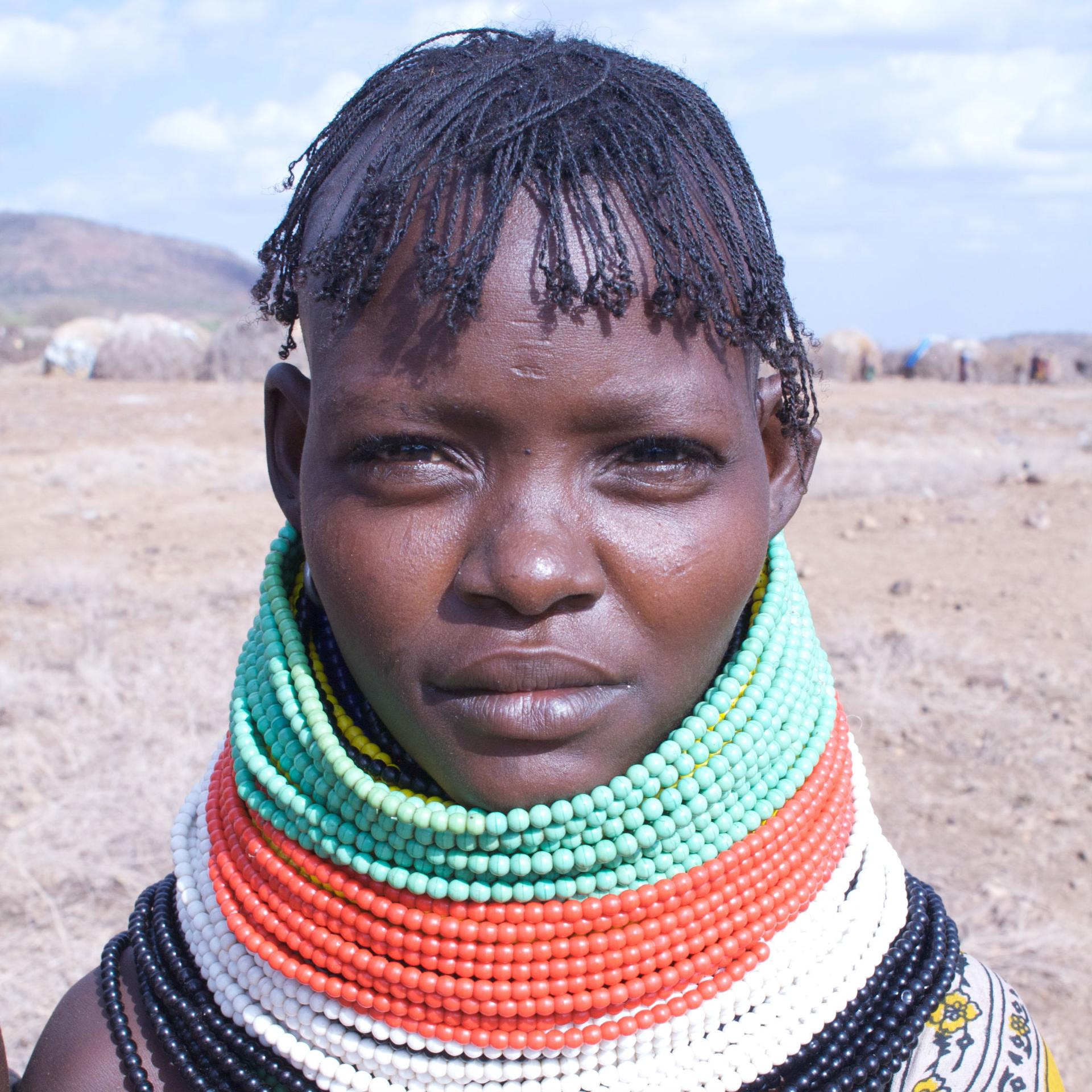
She’s an 18-year-old mother…who is dressed like her ancestors…layer upon layer of colored beaded necklaces that over time have elongated her neck. A tightly braided mohawk. Lines of ritual scarring on her forehead. “This life is really hard,” she says. She’s clearly proud of her heritage, but could move on. She is educating her son, and hopes he will get a job in the city and take her with him.
The sun begins to set on Loblono. My guides and translators urge me to leave before night falls. We get back in the truck with our armed security detail following behind, and head out across the desert.
The Turkana are a nomadic tribe, and their only possessions are their livestock. The village of Loblono is little more than a few temporary stick huts scattered across the sand. It looks like a strong wind could blow everything away. The only solid structure is a borehole and a gleaming solar water pump installed by the NGO Oxfam. It’s why people have settled here.

Hundreds of animals crowd around a trough, jostling to drink. There’s not enough water and they cry and bleat in desperation. This corner of Kenya has been defined by drought — and conflict.
“Here. This is the battlefield.”
James Ereng is the area chief, a government-appointed position. He’s dressed head to toe in khaki green like a soldier. The Turkana have been fighting for years with neighboring tribes, and the civil war in South Sudan has made the situation much worse. “They are fighting in South Sudan,” he says. “The government and the rebels get guns, and they spread to the tribes. Those guys are coming to fight us, to take animals by force.”
Along the road, teenage boys herd goats with AK-47s slung over their shoulders.

When the dry season comes, the Turkana move to the last remaining grazing areas along the border. But that’s disputed land, and rival tribes will kill to protect their precious fields of grass. According to Chief Oreng, they accuse the Turkana of coming to take their grass and water.
Livestock rules everything around here. A Turkana man is judged on the size of his herd. To get married, he must have hundreds of camels, goats and cattle as dowry. The pastoralist lifestyle has allowed the Turkana to adapt to the desert. But climate change is making it increasingly difficult to survive here. In 2006, a terrible drought and famine starved many and killed thousands of cattle. The reality is . . . they can’t seem to rely on consistent rainy seasons here anymore. Chief Ereng says the rains were weak again this spring.
“We are expecting a disaster,” he says. “A disaster of drought.”

And then tribes here do what they’ve done for hundreds of years — organize raids to replenish their stock.
There is hope that this conflict could end. Recently two discoveries were made that could completely transform life here: a substantial reserve of oil and a massive underground aquifer, the largest in Kenya. The oil could obviously bring much-needed jobs and roads to the region. The water can be used to irrigate fields and ease the devastating cycle of drought and conflict. Benson Longor works for Oxfam in Turkana. “[The aquifer] is huge, but the expectations of the people need to be managed,” says Longor. “As it is now, it is just an unavailable resource that is not yet accessible to the people, including the local community. The need to actually pump resources into making that water accessible is a priority for the Turkana County government.
The effort could take years. It’s not easy to build pipes to carry water across miles of desert, especially in an area that doesn’t even have paved roads. Another solution to the conflict is a peace settlement. Talk to anyone here in Loblono, and they’ll point to a model – to the south of them, the Turkana have made peace with the Karamoja tribe. And it’s lasted. Chief Ereng says people here are tired of risking their lives just to feed their animals. He met with leaders of rival tribes two weeks ago to negotiate a cease fire.
“And we told each tribe, please, let us preach peace,” he says. “Instead our people can live together. Then maybe the problem will be reduced.”
But three days prior a school boy, who had been herding goats, limped into the village with a bullet wound in his leg. If he hadn’t had a gun to defend himself he likely would have been killed. Chief Ereng told people here not to retaliate. Instead, he went back to the leaders and got a promise from them that they’d investigate and punish the perpetrators.
Of course there’s a more radical way to bring about peace: get rid of the animals who need this water and you get rid of the fighting.
Celesti Norongo, speaking through a translator, is not afraid to let go of this traditional pastoralist lifestyle.
“It’s only because of the animals that we are fighting,” she says.

She’s an 18-year-old mother…who is dressed like her ancestors…layer upon layer of colored beaded necklaces that over time have elongated her neck. A tightly braided mohawk. Lines of ritual scarring on her forehead. “This life is really hard,” she says. She’s clearly proud of her heritage, but could move on. She is educating her son, and hopes he will get a job in the city and take her with him.
The sun begins to set on Loblono. My guides and translators urge me to leave before night falls. We get back in the truck with our armed security detail following behind, and head out across the desert.
